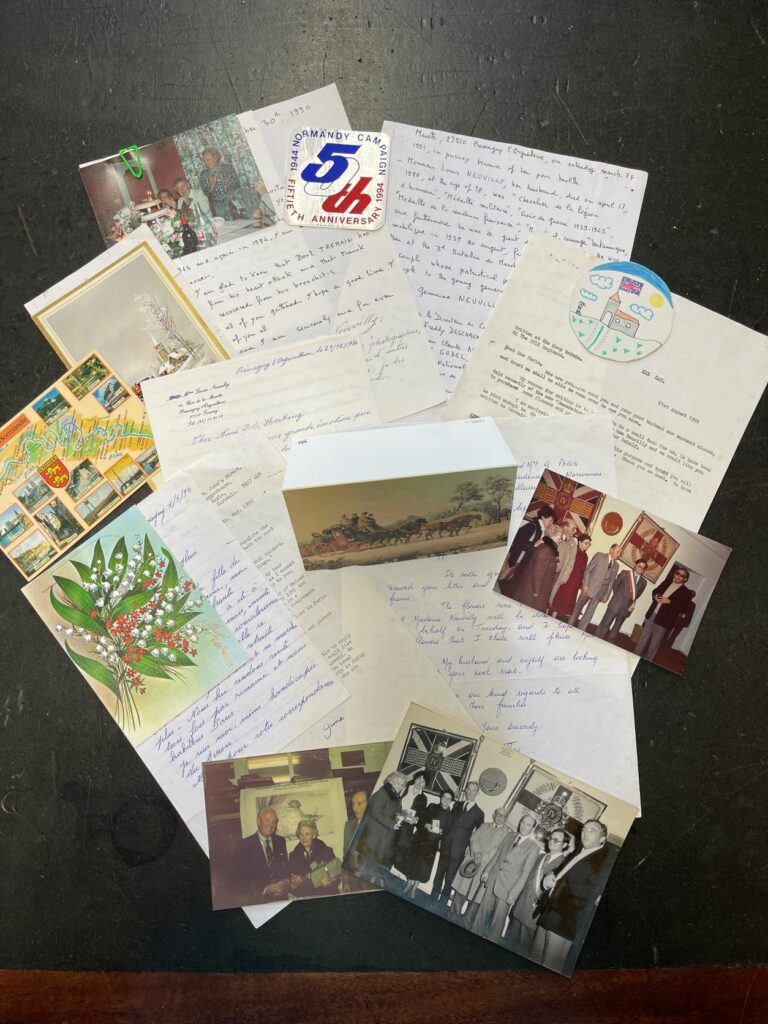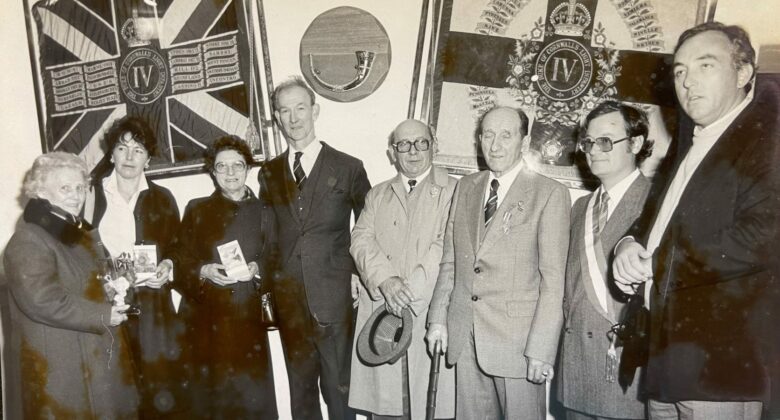The 5th Battalion DCLI were a special unit in that they were made up of a territorial force, a part time component of the British Army. They were all Cornishmen based in the County and despite being part time soldiers the men of the 5th Battalion were needed on the Western Front so were drafted out to France. They landed in Normandy in June 1944 stepping up to fight their way across North-west Europe, and in doing so taking part in some of the fiercest and bloodiest battles of the entire conflict of the Second World War.
The Territorial Force Leave Cornwall
At the outbreak of the war, the 5th Battalion who were in East Cornwall underwent training, guard duties, anti-invasion defence and mobile counterattack roles for five years. They also served in the same brigade as the 4th Battalion who were based in the West of the County. For those 5 years both Battalions did the same training, until in late summer 1942 the 4th and 5th went their separate ways when the 5th were selected to form part of the 214 Independent Infantry Brigade.
The 5th Battalion DCLI landed in Normandy on June 22nd, 1944, as part of the 43rd (Wessex) Division, and took part in their first action on June 27th at Cheux where the fighting quality of the battalion was demonstrated with the destruction of five German tanks who had attacked Battalion headquarters. They lost 20 men in this battle including the Commanding Officer Lieutenant Colonel Atherton. This first battle set the standard for the remainder of the campaign, with the Cornishmen showing courage and professionalism in all its encounters, sadly this meant the loss of many good men.
Rebuilding the Battalion
The 5th Battalion went on to take many more losses since their arrival in France a month before, a rate of attrition that was plainly unsustainable. It was after the heroic battle of Hill 112 where the injured and killed men were replaced, with many joining soldiers coming from its sister Cornish Battalion the 4th DCLI. These were men that for much of the war had trained and served alongside each other so made for an easy transition to rebuilding the Battalion into a viable fighting unit again.
The crossing of the River Noireau marked the end of the fighting in Normandy for the 5th Battalion. On the evening of the 16th August the bugles sounded the ‘last Post’ over he graves of the men who had died and it was now time again for rest and reinforcement and for this, the 5th withdrew to higher ground between Berjou and Le Hamel, the Germans had succeeded in breaking contact and withdrew to the far side of the River Seine. And for a few happy days the 5th enjoyed a well-earned rest.
A few miles to the south of the 5th DCLI’s position, scenes of carnage were enacted as the German army made desperate attempts to escape across the River Seine. For five days the British and American air forces and artillery wrought destruction on the fleeing enemy, about a third escaped and the rest taken as prisoners and the dead counted.
Crossing the Seine Under Enemy Eyes
The scene was now set for the crossing of the River Seine by the 43rd (Wessex) Division and by the 22nd August the Division was concentrated around the town of Gace, and their task was to establish a bridge-head across the Seine at Vernon. The River Seine at Vernon is fast flowing and some 200 yards wide, with areas thick and deep in mud making a night crossing hazardous. Far worse however, was that the enemy were strongly entrenched on the ground rising from the river, where they could cover the crossing with direct fire, which made the bridge crossing under enemy observance impossible. The far bank was to be secured by the 7th Somerset and the 5th DCLI as it was decided that these battalions should cross the river by the wreckage of the road bridge which linked Vernon on the west bank to Vernonette on the east bank, and luckily even under enemy scrutiny these battalions got across unscathed. Previously the Scout Platoon under Captain Spencer had crossed the river with the task of reporting the situation on the far bank. There he had been joined by a member of the French Resistance, M Neavilly, who offered his services as a guide.
French Resistance
As Neavilly led the platoon up the steep wooded slopes beyond Vernonette, he suddenly came face to face with two German machine gunners. In that split second the Frenchman threw himself across the muzzles of both guns as they opened fire. He undoubtedly saved lives in the Scout Platoon, but at a cost of terrible injuries to himself. Remarkably he survived and for this outstanding act of gallantry he was later awarded the Kings Medal for courage in the Cause of Freedom, the highest gallantry decoration that could be bestowed on a foreign civilian.
The expected counterattack on the 5th Battalion failed to materialise until the early hours of 27th August, when an enemy patrol penetrated the defences of the returning DCLI patrol. Drastic artillery fire was ordered and confident his own men were dug in enough to be safe; a shower of artillery was brought down on the position. Soon after the Royal engineers had completed the bridges across the Seine, linking Vernon with Vernonette and the 5th DCLI were relieved by the 1st Worcesters and continued the advance to the next village, where the remaining Germans had made a hasty withdrawal, leaving the village to a gloriously inebriated Frenchman who roared out the Marseillaise and flung his arms around the somewhat embarrassed soldiers!
Monsieur Louis Neuvilly the French resistance member created this tapestry while he was in Newport hospital in Wales after he was wounded protecting the DCLI officer.

The kinship that followed this precarious meeting at the bank of the Seine was to continue well after the war had ended. M Neavilly corresponded with the Old Commrades Association of the 5th Battalion for many years into old age. Andrew our archivist has uncovered many letters, postcards and greetings cards between the two parties, and it is obvious that a sincere and deep friendship had developed from that fateful time on the banks of the River Seine.
Much of these accounts have been taken from Major Hugo White’s book ‘One and All’. Hugo is a regimental historian and met Monsieur Neavilly on his visits to the Keep.



Source: One and All, A History of the Duke of Cornwall’s Light Infantry 1702 – 1959. By Hugo White.
Bodmin Keep is open Monday – Saturday and Hugo’s White’s book is available to buy in the museum shop and from our online shop

